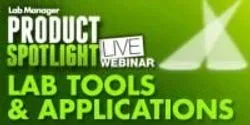Benchtop

Problem: U.S. food testing labs are closely monitoring discussions over proposed legislation regarding food safety. This year, lawmakers could approve more stringent safety standards. That means food laboratories will be looking for efficient and affordable equipment to help them adhere to regulations.

Ultraviolet-visible (UV-Vis) spectrophotometry is arguably the most common as well as one of the oldest forms of absorption-based analysis. UV and visible regions of the electromagnetic spectrum are contiguous: UV wavelengths range from 10 to 4000 angstroms; they are visible from 4000 to 7000 angstroms.

Vacuum pumps are an essential piece of equipment and are used in a wide variety of processes in most laboratories. Over the past 25 years, it has become apparent that vendors have made significant innovative improvements to vacuum pumps, with important developments in high vacuum technology, corrosion resistance, vacuum control, and improvements in the efficiency and ecological impact of vacuum pumps.

Lysosomes are the garbage disposals of animal cells. As the resources are limited in cells, organic materials are broken down and recycled a lot — and that’s what lysosomes do. Detecting problems with lysosomes is the focus of a new set of fluorescent probes developed by researchers at Michigan Technological University. The Royal Society of Chemistry published their work in January.

Total Organic Carbon (TOC) analyzers are a mainstay of environmental and quality control chemistry. TOC, a crucial metric in many processes, may arise from a combination of living or dead organisms or chemical contamination. Its measurement can serve as a surrogate for more difficult measurements or a screen for further analysis.
















